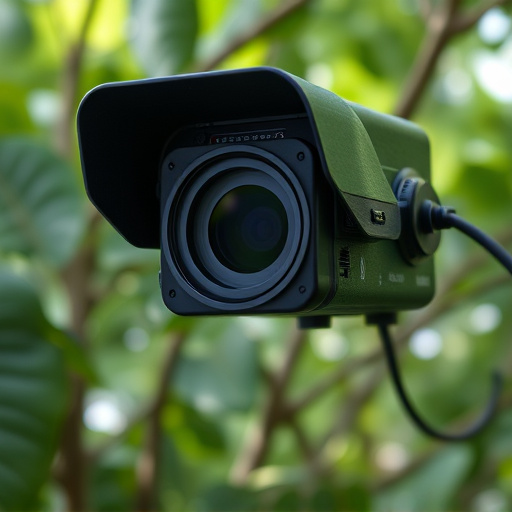Remote Viewing Nanny Surveillance Systems offer parents real-time monitoring of their children's activities from a distance, using advanced cameras and encryption for data security. However, these systems raise ethical and legal concerns regarding privacy, consent, and potential misuse. Strategic placement of hidden cameras in common areas and responsible use are crucial to mitigate unintended consequences, while evolving technology like thermal imaging and AI analytics enhances detection methods for covert recording devices.
In today’s digital age, remote viewing technology has evolved, making covert recording equipment a viable option for nanny surveillance. This article delves into the intricacies of understanding remote viewing technology for effective nanny surveillance systems. We explore ethical considerations and legal implications to ensure responsible use. Effective placement strategies and advanced detection methods are discussed to help avoid being caught in the act. For parents seeking peace of mind, this guide offers valuable insights into harnessing remote viewing technology while navigating legal boundaries.
- Understanding Remote Viewing Technology for Nanny Surveillance
- Ethical Considerations and Legal Implications of Covert Recording
- Effective Placement Strategies for Discreet Surveillance Systems
- Advanced Detection Methods to Avoid Being Caught in the Act
Understanding Remote Viewing Technology for Nanny Surveillance
Remote viewing technology plays a pivotal role in modern nanny surveillance systems, enabling parents to monitor their children’s activities from a distance. This cutting-edge approach goes beyond traditional monitoring by allowing individuals to ‘see’ and assess situations in real-time without being physically present. By utilizing specialized equipment and software, remote viewing systems capture and transmit video feeds, providing a comprehensive view of the environment.
The process involves advanced camera systems with pan, tilt, and zoom capabilities, ensuring every angle is covered. These cameras are strategically placed to offer optimal visibility while maintaining privacy. Combined with sophisticated data encryption methods, remote viewing technology ensures secure transmission of footage, guaranteeing sensitive information remains confidential. This innovative approach to nanny surveillance offers parents peace of mind, knowing they can keep an eye on their children’s well-being remotely.
Ethical Considerations and Legal Implications of Covert Recording
The use of covert recording equipment, especially in domestic settings like a remote viewing nanny surveillance system, raises significant ethical and legal concerns. While the ability to monitor activities remotely can provide peace of mind for employers or parents, it also infringes on privacy rights and can foster an atmosphere of distrust. Ethical considerations include respect for individual privacy, consent, and the potential for misuse of recorded information. Legally, many regions have strict regulations regarding covert recording, particularly in private residences, to protect citizens from unlawful surveillance. These laws vary by jurisdiction, but they generally mandate clear and explicit consent from all parties involved, especially when it comes to recordings conducted without knowledge or agreement.
The implications extend beyond the legal realm, impacting interpersonal relationships and societal trust. Covert recordings can lead to misunderstandings, damaged relationships, and even false accusations if not handled responsibly. For example, a nanny surveillance system might capture moments that seem incriminating but lack context, leading to unfair judgments. Thus, it’s crucial to approach these technologies with a balance between security needs and the fundamental right to privacy, ensuring transparency, consent, and responsible use to avoid unintended consequences.
Effective Placement Strategies for Discreet Surveillance Systems
In the realm of covert recording, effective placement strategies are key to achieving successful and discreet surveillance. One popular application is in nanny surveillance systems, where parents seek remote viewing capabilities to monitor their children’s safety while in care. Strategically placing hidden cameras in common areas like living rooms or playrooms ensures a comprehensive view without raising suspicions. These systems allow for real-time remote viewing, enabling parents to keep an eye on their little ones from anywhere, at any time.
When deploying such systems, it’s crucial to consider the environment and behavior of those being monitored. For instance, placing cameras in areas with natural line-of-sight or out of sight behind furniture can provide optimal coverage without drawing attention. Additionally, using small, unintrusive camera devices designed for nanny surveillance helps maintain a sense of normalcy while capturing high-quality footage. Regular testing and updating of these systems ensure their ongoing effectiveness, especially in the dynamic landscape of digital technology where new detection methods constantly emerge.
Advanced Detection Methods to Avoid Being Caught in the Act
With the advancement of technology, detection methods for covert recording equipment have also evolved. One of the most effective techniques is the utilization of Remote Viewing Nanny Surveillance Systems. These cutting-edge systems employ advanced sensors and cameras that can detect unusual activity or hidden devices from a distance, making it virtually impossible for covert recorders to go unnoticed.
By integrating thermal imaging, motion detection, and AI-powered analytics, these systems can identify heat signatures, subtle movements, and even the presence of electronic emissions from hidden microphones or cameras. This proactive approach allows users to stay one step ahead, ensuring their privacy is not compromised without raising suspicion.
The integration of remote viewing technology into nanny surveillance systems offers a unique perspective on childcare monitoring. While it raises ethical debates and legal concerns, strategic equipment placement and advanced detection methods can ensure discreet observation without compromising privacy. Understanding these aspects is key to harnessing the benefits of such systems while navigating the intricate balance between security and personal freedom. By employing effective strategies, parents can gain peace of mind knowing their children are safe, even when they’re not physically present.
